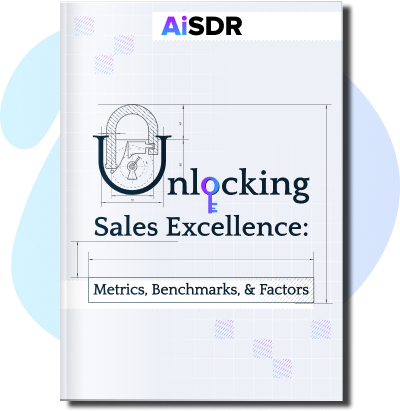5 Lessons I Wish I Had Known Before Starting My First Company

It’s not the failure that matters but rather what you took away from it. Check out 5 lessons our CEO learned after starting his first company
My transformation from lawyer to entrepreneur is best described like this: “I had an idea and I wanted to see where it went.”
And it’s true.
As a lawyer, I found myself constantly faced with the same set of problems. At the time, there wasn’t a software that completely solved the problem, which is why I decided to build one.
That was 8 years ago.
It sounds straightforward nowadays, but in reality, there were plenty of bumps in the road and I went through my fair share of on-the-job training.
There were successes. There were failures. But above all else, there were definitely lessons I could use in the future.
Which is exactly what I’ve done.
Here are 5 lessons I learned from running my first company that I’ve applied to my second.
Lesson 1: Sell in the market where you want to build your company
One of the biggest lessons I’ve learned from my first company is the importance of starting your business in your target market.
My first company AXDRAFT started in Ukraine, and we stayed there until we felt our product was ready for the United States.
That’s when reality hit. It took us more or less 2 years to get sales motions up and running in the US.
So while we eventually achieved our ultimate goal, we ended up taking a longer path than expected.
At AiSDR, the US has been our target market from Day 1, and we’ve built our sales motions accordingly. This has allowed us to achieve much faster growth.
You can even take this a step further and decide if you want to target a market at a more local level. For instance, you might set up in the Valley to capitalize on the fundraising opportunities available, or you can head to a low-cost market and keep expenses more manageable while you’re starting a business.
Lesson 2: Speak to potential customers even if you lack a product
Many early founders hesitate to start speaking with potential customers if they don’t yet have a product.
I’ve learned this shouldn’t be the case.
After all, chatting with possible users isn’t the same as giving a sales demo.
And since you’re not giving a demo, you don’t need a working product to start talking, selling, getting attention, and gauging interest. If anything, the sooner you start, the more traction you’ll have once you do launch because you’ll have spent more time researching the market.
At AXDRAFT, we spent our first two years focused solely on outbound. This put us in an uphill battle when we didn’t have to be.
With AiSDR, we created a simple landing page that allowed us to do two things:
- Get people to sign up for a waitlist to try out our product once it launched
- Gather contact info of people who were willing to discuss their pain points and the type of solution they were looking for
All of this can happen as you’re developing your product. Plus, you can use the insights you collect to help create an initial MVP.
Lesson 3: Prioritize execution
Execution should be a top priority for all start-ups and early-stage companies.
The reasons are endless.
For example, being the first to market can give you a significant advantage in highly competitive fields. You’ll have fewer rivals to contend with for market share, and it’ll be simpler to establish a foothold.
Execution also shows your team is aligned and able to deliver results. This will pay dividends later on as investors become more confident in providing funds for your business.
Successful execution makes it easier to build (and maintain) momentum. Like Newton’s first law, a team that’s already in motion will stay in motion whereas a team that’s stalled will require considerable energy to return to speed.
It’s tempting to want to wait until you’ve ironed out all the kinks in your product. But at AiSDR, we launched once we had a usable MVP. Then we collected user feedback to help us improve our product while prioritizing which new features to add.
Lesson 4: Look into best practices for distributing equity
Learning how to distribute equity is one of the many things you end up quickly learning in the life of a start-up.
Equity is a valuable incentive for attracting talent early on, especially before you’ve been able to close a funding round and deposit money to the bank. Equity is also an essential tool for raising capital from investors.
That’s why you need to develop a strategy for equity distribution.
At my first company, we issued too much equity by the time we closed our seed round. This meant we didn’t have enough remaining for further fundraising, and we had to decide whether to push on or to create new stock.
With AiSDR, we’ve created an equity distribution plan that aligns with the best practices for our industry. This keeps us from finding ourselves in the same situation.
One analogy I like is to think of shares as a pie. As your company becomes more successful, the value of each share increases. And there are only so many slices of the pie. If you dish out too much pie, you either won’t have enough to last through the night or you’ll have to add more pie, decreasing the value of each slice in the process.
Lesson 5: Apply to a start-up accelerator as soon as possible
I’m a firm believer that start-up accelerators are the most life-changing and valuable experience that a start-up can have.
That’s because YC excels at creating an environment of extremely talented people who are working on exciting projects.
And with so much talent in one room, not only do you feel the urge to perform your best, but to be capable of showing progress if you’re asked about it. When there are super-skilled people all striving towards their vision, the end result is a supportive, non-aggressive environment that helps you grow as a new founder and as a company.
If you don’t make it into YC, there are other high-quality options like 500 Global and Techstars. In addition to the mentorship they provide, they unlock the possibility for funding and investment opportunities.
As a two-time YC alum, I’ve experienced YC in the shoes of both a new company and a company that’d been around for a few years.
Long story short, there was value in both experiences. AXDRAFT had already been up and running for ~3 years when I was accepted to YC, but YC helped us completely change our trajectory.
By comparison, I started AiSDR while I was at YC, and having input from YC’s experienced mentors helped me start off on the right foot.
Wrapping up
Starting a new business isn’t easy. However, if you have a plan and you execute it, it’s well worth the effort.
It may be a long and bumpy road, but by surrounding yourself with good people and keeping your business “default alive”, starting a business will be an enjoyable journey.
If you want to discuss how AiSDR can power your own business journey, schedule a call so we can have a chat and I’ll show you how we can help.











